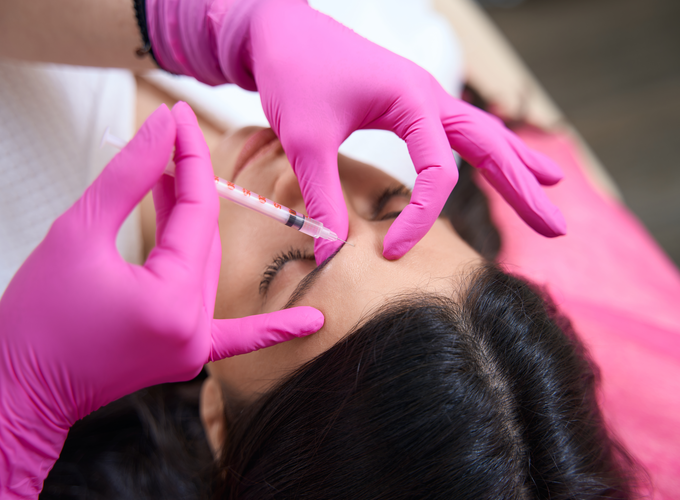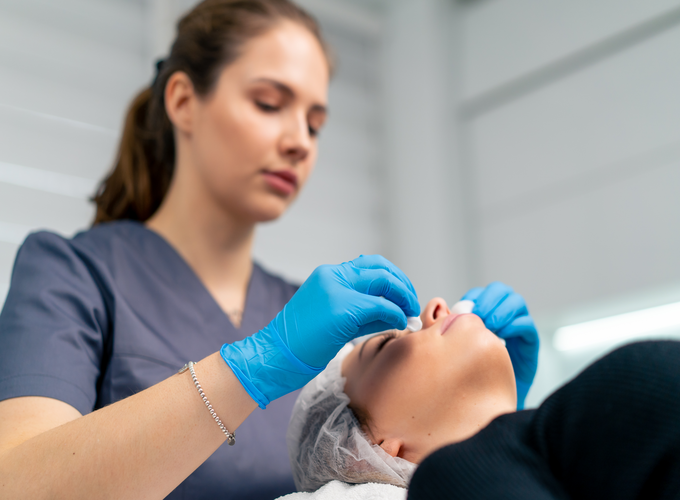Does Botox Hurt? A Guide to Comfort and Confidence
Understanding Botox and Its Purpose
What is Botox?

Botox is a widely recognized cosmetic treatment derived from botulinum toxin, a purified neurotoxin. While its origin might sound intimidating, Botox is scientifically engineered for safe use in small, controlled amounts. The treatment works by temporarily blocking nerve signals to specific muscles, causing them to relax.
This muscle relaxation smooths out dynamic wrinkles, such as frown lines, forehead creases, and crow’s feet, which result from repeated facial expressions like smiling, frowning, or squinting. As these muscles rest, the skin above them becomes smoother and firmer, giving the face a more youthful and rejuvenated appearance.
Why Choose Botox?
Botox is celebrated for its versatility, offering benefits that go beyond cosmetic enhancements. It’s an effective solution for reducing visible wrinkles and preventing new ones from forming, making it a favorite for individuals seeking to maintain a youthful appearance. Additionally, Botox addresses various medical concerns, such as managing chronic migraines, excessive sweating (hyperhidrosis), muscle spasms, and even acne.
These medical applications not only improve physical comfort but also enhance overall quality of life. By providing both cosmetic and therapeutic advantages, Botox offers a confidence-boosting solution for individuals looking to improve their appearance and skin health in one treatment.
Who Administers Botox?
To ensure safe and effective results, Botox should only be administered by trained and certified professionals. Licensed healthcare providers, such as dermatologists, plastic surgeons, or experienced aesthetic specialists, are equipped to deliver precise injections. Their expertise ensures the treatment is tailored to the patient’s unique facial anatomy, achieving a natural look without overcorrection.
Skilled practitioners also minimize risks, such as improper dosage or placement, which could lead to side effects like drooping eyelids. Choosing a reputable clinic and an experienced practitioner is crucial for achieving optimal results while prioritizing safety and patient comfort throughout the Botox experience.
Does Botox Hurt? Addressing the Big Question

Pain Perception During Botox Injections
One of the most common concerns about Botox is whether it hurts. The good news is that most patients report minimal discomfort during the procedure. The sensation is often compared to a mosquito bite or a slight pinch, making it tolerable for most people, even those sensitive to needles. Botox injections use ultra-fine needles, significantly smaller than those used for flu shots, which further reduces pain.
To enhance comfort, many clinics offer numbing agents such as topical anesthetic creams or ice packs before the injection. These measures ensure that even patients with a low pain threshold find the procedure manageable.
Post-Treatment Sensations
After a Botox session, it’s normal to experience mild and temporary sensations such as redness, swelling, or slight tightness at the injection sites. These effects usually subside within a few hours to a day. Some patients may also notice a small, temporary bump where the injection was administered, which quickly fades.
To alleviate any residual discomfort, applying an ice pack or using a soothing cream as advised by your practitioner can be helpful. Following post-care instructions, such as avoiding strenuous activities for 24 hours, can ensure smooth recovery and optimal results.
Comparing Botox to Other Cosmetic Injections
Compared to other cosmetic injections like dermal fillers, Botox is often considered less painful. This is largely due to the smaller needle size and the quick duration of each injection. Fillers typically involve thicker substances and larger needles, leading to slightly more discomfort during the procedure. Botox remains a more comfortable option overall.
Side Effects and Safety Considerations
Common Side Effects
Botox is generally regarded as a safe and minimally invasive treatment, but like any procedure, it can have side effects. The most common effects include mild swelling, tenderness, and slight bruising at the injection sites. Some patients may also experience redness or a feeling of tightness in the treated area.
These reactions are temporary and typically resolve within a few hours to a couple of days. Applying ice packs and following the practitioner’s aftercare instructions can help minimize these effects. Patients are encouraged to communicate any concerns with their healthcare provider to ensure a smooth recovery and peace of mind.
Rare Complications and Prevention
Although uncommon, there are rare complications associated with Botox, such as droopy eyelids or asymmetrical results. These issues can occur if the Botox spreads to unintended areas or is injected improperly. To mitigate such risks, it is crucial to choose a highly skilled and certified practitioner with extensive experience in administering Botox.
Additionally, patients should disclose their complete medical history and any medications they are taking to help the practitioner tailor the treatment safely. By selecting a reputable clinic and following professional advice, patients can significantly reduce the likelihood of complications and achieve safe, effective results.
Maximizing Comfort During Botox Treatments
Preparing for Your Appointment
Proper preparation is key to ensuring a comfortable Botox experience. Before your appointment, discuss any concerns or questions with your healthcare provider. This includes sharing your medical history, allergies, and any medications you are taking.
Avoid consuming alcohol, aspirin, or blood-thinning medications for at least 24-48 hours prior to the procedure, as these can increase the likelihood of bruising at the injection sites. It’s also helpful to stay hydrated and arrive at the clinic with clean skin, free from makeup or skincare products. Taking these steps ensures the procedure is tailored to your needs and minimizes potential discomfort or side effects.
During the Procedure
During the Botox treatment, practitioners take several measures to enhance your comfort. They may apply a topical numbing cream or use an ice pack to reduce sensations at the injection site. The use of ultra-fine needles, coupled with precise technique, ensures that each injection is quick and relatively painless. Most patients report feeling only a slight pinch.
Aftercare Tips for Best Results
After the procedure, following your practitioner’s aftercare instructions is crucial. Avoid strenuous activities, excessive sun exposure, and lying down for at least four hours to prevent Botox from spreading. Applying ice packs can help reduce swelling and redness. Gentle skincare practices will also ensure your skin heals smoothly and optimally showcases the results.
Conclusion
Botox has become one of the most popular cosmetic treatments for a reason—it offers an effective, minimally invasive way to enhance your appearance and boost confidence. For most patients, the process is quick and virtually pain-free, with only minor sensations like a small pinch or mild swelling that subside quickly. When administered by skilled and experienced practitioners, Botox provides natural-looking results, smoothing wrinkles and preventing new ones from forming, all while ensuring patient safety and comfort.
Preparation and aftercare are integral to a positive experience. By discussing your concerns and medical history with your healthcare provider, avoiding potential triggers like alcohol or blood thinners before treatment, and following post-procedure guidelines, you can ensure a smooth journey and optimal results.
Choosing a reputable clinic with certified professionals is essential for achieving your desired outcomes. A trusted clinic can offer personalized care, ensuring your Botox experience is safe, comfortable, and tailored to your unique needs.
FAQs
Does Botox hurt more than fillers?
Botox is generally considered less painful than dermal fillers. This is because Botox uses ultra-fine needles to inject a small amount of liquid directly into targeted muscles, causing only minimal discomfort. In contrast, fillers often involve larger needles or cannulas and inject a thicker substance, which can lead to a more noticeable sensation during the procedure. While everyone’s pain tolerance varies, most patients describe Botox as a quick, minor pinch compared to the deeper pressure sometimes felt with fillers.
How long does the pain from Botox last?
Any discomfort experienced during Botox injections is brief, typically lasting only a few seconds during the procedure itself. After the treatment, you might notice mild tenderness, redness, or a slight tightness in the treated areas, but these sensations usually resolve within a few hours to a day. In rare cases, minor bruising may take a few days to fade completely. Proper aftercare, such as applying ice packs, can help alleviate any residual discomfort.
Can numbing cream be used for Botox?
Yes, numbing creams can be applied to the skin before Botox injections to enhance comfort, especially for patients who are needle-sensitive. Many clinics also offer ice packs or vibration devices to further minimize discomfort during the procedure. Discussing your preferences and concerns with your practitioner will help tailor the treatment to your needs, ensuring a virtually pain-free experience.
Are there long-term side effects of Botox?
When administered by a skilled practitioner, Botox is considered safe with minimal long-term risks. Rare complications, such as muscle weakness or drooping eyelids, can occur if the Botox spreads to unintended areas, but these are temporary and preventable with proper technique. Over time, repeated use of Botox does not permanently alter the skin or muscles and is unlikely to cause significant side effects when used responsibly.
How can I ensure a comfortable Botox experience?
To ensure a comfortable Botox experience, start by selecting a certified and experienced practitioner who can deliver precise injections tailored to your needs. Prepare for your appointment by avoiding alcohol, aspirin, or blood-thinning medications beforehand, as these can increase bruising. During the procedure, topical numbing creams or ice packs can reduce sensations. Post-treatment, follow your practitioner’s aftercare advice, including resting, avoiding strenuous activities, and keeping the treated area clean. These steps will help ensure a smooth and comfortable journey with Botox.